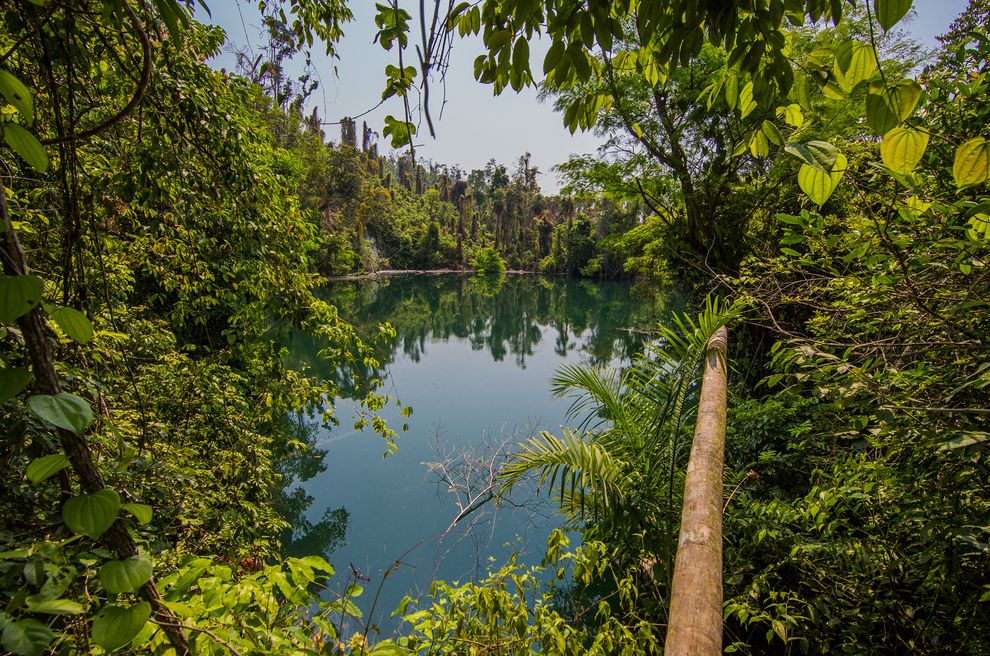In an article available in pdf format to download, 'A Place for Pilgrimage: the ancient Maya sacred landscape of Cara Blanca in Belize' by Lucero and Kinkella (go to www.anthro.illinois.edu/faculty/lucero/documents/11-LuceroKinkella.pdf) describes an interesting piece of geology as it has 23 pools or small lakes but is backed by a white limestone ridge directly overlooking the watery places where offerings were made to the Mayan gods. It is also a region of poor soils so was not developed by the Maya as an agricultural resource. The agriculture took place away from Cara Blanca. Neither does it possess significant Mayan architecture. No temples or palaces – the gods were being worshipped in the natural world. This is not so surprising as the Mayan word for mountain was the same as the word for temple – which implies Mayan temples and pyramids were artificial mountains. At Cara Blanca they had no requirement for an artificial mountain as they had the white cliff of Belize. See http://archaeologynewsnetwork.blogspot.co.uk/2015/01/mayans-offered-sacr…
The white cliffs remain white as the limestone is crumbly and is continually collapsing to provide a fresh white face – much like a chalk quarry when it is being worked or the white cliffs of the south coast which are subject to regular falls of blocks of chalk on to the beach below. The limestone karst of the Mayan lowlands is pitted with caves and springs to the underworld in which offerings were made – and the fact that some of the springs were sources of water (cenotes) added to the special nature assigned to the region. Many of the caves themselves are sources of water – springs, streams, pools. The Maya wre making offerings in caves and cenotes long before they got around to building cities and ritual complexes. Cara Blanca means the white face and white was invariably a colour associated with the sky gods as white is the colour of light at night. The white cliffs were regarded as sacred in much the same way as chalky white long barrows, and ditch and bank formations in Europe were. For example, it is thought that Iron Age hill forts were constructed in easily visible locations on chalk hills and the escarpment so that they could be seen for miles around – and the white chalk was designed to pick them out, and kept clean for that purpose. The Iron Age in Europe was not too far in time from the Mayan classic period – but Cara Blanca was probably already a place of pilgrimage. It is a limestone ridge overlooking 23 cenotes or small lakes of water, some of which go way down. It is on an east to west alignment (roughly) and the water sources are now dividing the cliff from an expanse of tropical forest. The ridge appears to be part of a fault line – some of which has been uplifted in the remote past. Interestingly, the limestone and dolomite geology goes back to the Cretaceous era (the same as the chalk in the UK) while the sand, clays, and the gypsum date from the Miocene and Pleistocene eras.

At http://news.nationalgeographic.com/news/2015/01/150127-maya-water-temple… … concerns offering to the gods – or as it claims, the rain god. Gods associated with cenotes and the underworld. We may then wonder why Mayan ritual complexes had disappeared by 900AD. What had happened to people to abandon their gods?
